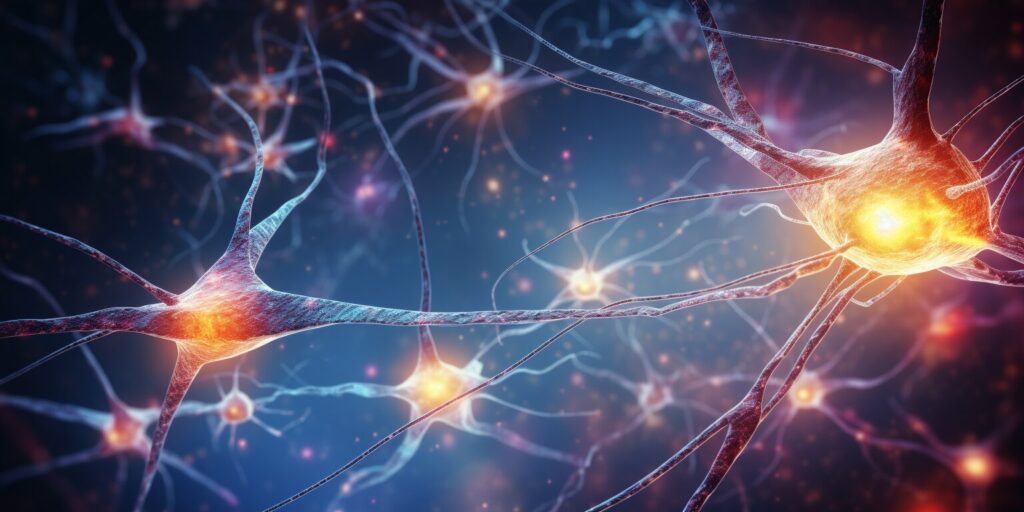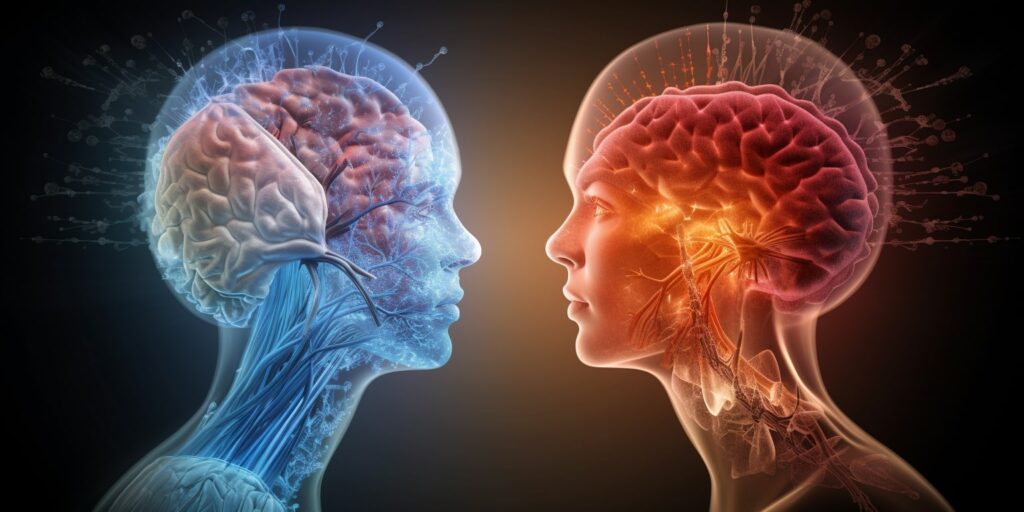Welcome to our comprehensive guide on movement disorders and their intricate connection to neurology. This article will explore the fascinating relationship between the brain and these conditions. From Parkinson’s Disease to Restless Leg Syndrome, we’ll delve into the neurological basis of various movement disorders, shedding light on the complex processes that govern our movements.
By understanding the brain’s central role in controlling movement, we can gain valuable insights into the diagnosis, treatment, and management of these conditions. Whether you or a loved one are living with a movement disorder or simply interested in expanding your knowledge, this article aims to provide you with a deeper understanding of the neurological underpinnings and challenges associated with movement disorders.
So, let’s embark on this journey into the brain’s role in movement disorders and discover how neurology can improve treatment outcomes and enhance quality of life. Let’s unlock the mysteries behind movement disorders and empower ourselves with knowledge.
What Are Movement Disorders?
Movement disorders are a diverse group of neurological conditions that affect a person’s ability to control and coordinate their voluntary movements. These disorders can manifest in various ways, resulting in abnormal or involuntary movements, muscle weakness, tremors, or difficulties with posture and gait.
There are several types of movement disorders, each with its own unique characteristics. Some common movement disorders include:
- Parkinson’s Disease: A progressive neurological disorder characterized by tremors, rigidity, bradykinesia (slowness of movement), and impaired balance.
- Huntington’s Disease: An inherited disorder that leads to the degeneration of brain cells and causes involuntary movements, cognitive decline, and emotional disturbances.
- Essential Tremor: A condition characterized by rhythmic shaking or tremors, typically affecting the hands, but can also involve the head or voice.
- Dystonia: A neurological disorder that causes involuntary muscle contractions, leading to repetitive or twisting movements and abnormal postures.
- Ataxia: A condition that affects coordination and balance, resulting in unsteady movements, speech difficulties, and difficulties with fine motor skills.
- Restless Leg Syndrome: A condition characterized by an uncontrollable urge to move the legs, often accompanied by uncomfortable sensations.
- Dyskinesia: A movement disorder characterized by involuntary, jerky movements, which can occur as a side effect of medications used to treat Parkinson’s disease.
- Tic Disorders: Conditions characterized by repetitive, sudden, and involuntary movements or sounds, such as eye blinking, facial grimacing, or vocal outbursts.
Each movement disorder has its own distinct symptoms, underlying causes, and treatment approaches. Understanding the specific characteristics of each disorder is crucial for accurate diagnosis and effective management.
| Movement Disorder | Symptoms | Underlying Causes | Treatment Options |
|---|---|---|---|
| Parkinson’s Disease | Tremors, rigidity, bradykinesia, impaired balance | Loss of dopamine-producing cells in the brain | Medication, deep brain stimulation, physical therapy |
| Huntington’s Disease | Involuntary movements, cognitive decline, emotional disturbances | Genetic mutation of the huntingtin gene | Symptom-focused medication, supportive therapy |
| Essential Tremor | Rhythmic shaking or tremors | Unknown, but likely a combination of genetic and environmental factors | Medication, deep brain stimulation, occupational therapy |
| Dystonia | Involuntary muscle contractions, abnormal postures | Abnormal brain activity, genetic factors | Medication, botulinum toxin injections, physical therapy |
| Ataxia | Unsteady movements, speech difficulties, impaired coordination | Genetic mutations, brain damage, alcohol abuse | Symptom management, physical therapy, assistive devices |
The Central Role of the Brain in Movement
In the fascinating realm of neurology, movement disorders take center stage as an intricate connection between the brain and the body. The brain plays a central role in controlling movement, orchestrating a symphony of signals to enable even the simplest actions. Unlocking the secrets of this complex system can provide vital insights into the development, diagnosis, and treatment of movement disorders.
Neurologists have long delved into the intricate neurological processes that govern movement. From the delicate coordination of muscles to the precise timing of actions, the brain is the orchestrator behind every step, every gesture, and every movement we make.
The Coordination of Movements
The coordination and regulation of movements involve a highly specialized network of brain regions. Key areas, such as the basal ganglia, the cerebellum, and the cortex, work together seamlessly to ensure smooth and precise motor function.
The basal ganglia, a collection of structures deep within the brain, act as a critical hub in movement control. It receives information from other brain regions and relays instructions to the motor cortex, guiding voluntary movements. Dysfunction in the basal ganglia can result in a variety of movement disorders, such as Parkinson’s disease.
The cerebellum, nestled at the back of the brain, contributes to the coordination and precision of movements. It fine-tunes motor functions, ensuring that actions are executed with accuracy and fluidity. Movement disorders like ataxia and essential tremor can arise from abnormalities in the cerebellum.
The cortex, the outer layer of the brain, plays a crucial role in planning and initiating movements. It serves as the command center, integrating sensory information and generating motor responses. Disorders such as dystonia and tic disorders can result from dysfunctions in the cortex.
The Intricate Neurological Processes
An elaborate network of neurons establishes connections within the brain that facilitate the transmission of electrical signals. Neurotransmitters, chemical messengers, transmit information between neurons, allowing for effective communication within the brain’s circuitry.
Disruptions occur in these intricate neurological processes in movement disorders. Imbalances in neurotransmitters, such as dopamine, can lead to the development of conditions like Parkinson’s disease and dyskinesia.
Moreover, genetic factors can also play a role, predisposing individuals to movement disorders. Mutations in specific genes can disrupt the normal functioning of neurons and interfere with the brain’s ability to control movement.
Understanding Movement Disorders Through Neurology
By studying the brain’s central role in movement, neurologists can gain valuable insights into the underlying mechanisms of movement disorders. This understanding paves the way for more accurate diagnoses and targeted treatments aimed at restoring proper movement function.
| Movement Disorder | Key Brain Areas |
|---|---|
| Parkinson’s Disease | Basal Ganglia |
| Huntington’s Disease | Basal Ganglia, Cortex |
| Essential Tremor | Cerebellum |
| Dystonia | Cortex |
| Ataxia | Cerebellum |
| Restless Leg Syndrome | Basal Ganglia |
| Dyskinesia | Cortex |
| Tic Disorders | Cortex |
Neurological Basis of Movement Disorders
In this section, we will delve into the intricate neurological basis of various movement disorders, examining the specific brain abnormalities and dysfunctions associated with conditions such as Parkinson’s Disease, Huntington’s Disease, Essential Tremor, Dystonia, Ataxia, Restless Leg Syndrome, Dyskinesia, and Tic Disorders.
Parkinson’s Disease: A Spotlight on Dopamine
Parkinson’s Disease, a common movement disorder, is characterized by the degeneration of dopamine-producing neurons in a specific region of the brain known as the substantia nigra. This leads to a decline in dopamine levels, disrupting the brain’s ability to regulate movement effectively.
Huntington’s Disease: The Role of Genetic Mutation
Huntington’s Disease, an inherited movement disorder, is caused by a mutation in the huntingtin gene. This mutation produces a toxic protein that damages neurons in the basal ganglia, a region responsible for motor control.
Essential Tremor: Abnormal Oscillations in the Cerebellum
Essential Tremor is characterized by rhythmic, involuntary trembling movements that primarily affect the hands, head, and voice. Research suggests that the cerebellum, a structure involved in coordinating motor functions, experiences abnormal oscillations, contributing to the development of this condition.
Dystonia: Disrupted Communication Between Brain Regions
Dystonia is a movement disorder characterized by involuntary muscle contractions that cause abnormal posture and twisting movements. It is believed to result from disrupted communication between different brain regions, particularly the basal ganglia and motor cortex.
Ataxia: Damage to the Cerebellum
Ataxia refers to a group of disorders marked by impaired coordination and difficulties with balance. It typically occurs due to damage to the cerebellum, disrupting the brain’s ability to integrate sensory information and coordinate movements effectively.
Restless Leg Syndrome: Dopamine Imbalance and Sensory Dysregulation
Restless Leg Syndrome is characterized by uncomfortable sensations in the legs, often accompanied by an irresistible urge to move them. Research suggests that an imbalance of dopamine and abnormalities in sensory processing and regulation contribute to the development of this condition.
Dyskinesia: Medication-induced Abnormal Movements
Dyskinesia refers to abnormal, involuntary movements that can occur as a side effect of certain medications used to treat movement disorders such as Parkinson’s Disease. These medications, particularly levodopa, can lead to dysregulated dopamine signaling, resulting in dyskinesia.
Tic Disorders: Dysfunction in the Basal Ganglia and Cortex
Tic Disorders are characterized by involuntary, repetitive movements or vocalizations called tics. Dysfunction in the basal ganglia, a collection of brain structures involved in movement regulation, and the cortical-striatal-thalamic circuit are believed to play a role in the development of tic disorders.
Movement Disorder Summary Table
In the table below, we provide a summary of the key movement disorders discussed in this section, highlighting their neurological basis and key characteristics.
| Movement Disorder | Neurological Basis | Key Characteristics |
|---|---|---|
| Parkinson’s Disease | Degeneration of dopamine-producing neurons in the substantia nigra | Tremors, rigidity, bradykinesia, postural instability |
| Huntington’s Disease | Mutation in the huntingtin gene leads to neuronal damage in the basal ganglia | Chorea, cognitive decline, psychiatric symptoms |
| Essential Tremor | Abnormal oscillations in the cerebellum | Involuntary trembling movements, most commonly affecting the hands |
| Dystonia | Disrupted communication between the basal ganglia and motor cortex | Involuntary muscle contractions causing abnormal posture and twisting movements |
| Ataxia | Damage to the cerebellum | Impaired coordination, difficulties with balance |
| Restless Leg Syndrome | Dopamine imbalance and sensory dysregulation | Uncomfortable sensations in the legs, accompanied by an urge to move |
| Dyskinesia | Medication-induced dysregulated dopamine signaling | Abnormal, involuntary movements |
| Tic Disorders | Dysfunction in the basal ganglia and cortical-striatal-thalamic circuit | Involuntary repetitive movements or vocalizations |
Diagnosis and Treatment of Movement Disorders
Diagnosing and treating movement disorders requires a comprehensive approach that considers the specific condition and its underlying causes. These disorders, including Parkinson’s Disease, Huntington’s Disease, Essential Tremor, Dystonia, Ataxia, Restless Leg Syndrome, Dyskinesia, and Tic Disorders, can greatly impact an individual’s quality of life. Early and accurate diagnosis, followed by appropriate treatment, is vital for effectively managing these disorders.
Diagnosis often involves a combination of medical history evaluation, physical examinations, and specialized tests. Neurologists play a crucial role in assessing symptoms, conducting neurological exams, and ordering relevant diagnostic tests to confirm the presence of movement disorders.
Common diagnostic tests for movement disorders include:
- Magnetic Resonance Imaging (MRI) scans to evaluate the brain structure and detect any abnormalities
- Electromyography (EMG) to measure the electrical activity in muscles and identify abnormalities
- Computerized Tomography (CT) scans to obtain detailed images of the brain and rule out other possible causes
- Genetic testing to identify specific gene mutations associated with certain movement disorders
Once a diagnosis is confirmed, a personalized treatment plan can be developed. The approach to treatment varies based on the type and severity of the movement disorder and individual health factors.
Common treatment options for movement disorders include:
- Medications: Pharmacological interventions, such as dopaminergic drugs for Parkinson’s Disease or anticonvulsants for Essential Tremors, may help alleviate symptoms and manage the condition.
- Surgical interventions: In some cases, deep brain stimulation (DBS) surgery may be recommended to implant electrodes in specific areas of the brain to regulate abnormal movements.
- Physical therapy: Therapeutic exercises and rehabilitation programs can help improve mobility, coordination, and muscle strength.
- Lifestyle modifications: Making healthy lifestyle choices, including regular exercise, stress management, and adequate sleep, can support overall well-being and potentially minimize symptoms.
It is important to note that treatment plans are tailored to the individual’s needs and may require ongoing adjustments to optimize the management of their movement disorder. Close collaboration between healthcare professionals, including neurologists, physical therapists, and psychologists, can provide comprehensive care and support for individuals with movement disorders.
| Movement Disorder | Common Diagnostic Tests | Treatment Options |
|---|---|---|
| Parkinson’s Disease | MRI, EMG, Genetic testing | Medication, DBS surgery, physical therapy |
| Huntington’s Disease | MRI, Genetic testing | Medication, supportive care |
| Essential Tremor | MRI, EMG | Medication, DBS surgery |
| Dystonia | MRI, Genetic testing | Medication, DBS surgery, physical therapy |
| Ataxia | MRI, Genetic testing | Supportive care, physical therapy |
| Restless Leg Syndrome | Medical history evaluation, sleep studies | Medication, lifestyle modifications |
| Dyskinesia | MRI, Genetic testing | Medication, physical therapy |
| Tic Disorders | Medical history evaluation, psychiatric evaluation | Medication, behavioral therapy |
Living with a Movement Disorder
Living with a movement disorder can present a unique set of challenges, but with the right support and strategies, individuals can manage and cope with these conditions effectively. Whether it’s Parkinson’s Disease, Huntington’s Disease, Essential Tremor, Dystonia, Ataxia, Restless Leg Syndrome, Dyskinesia, or Tic Disorders, resources and advancements are available to help improve the quality of life for those affected.
Support Resources
Support resources can provide invaluable assistance and guidance when facing the daily hurdles of a movement disorder. Organizations and support groups dedicated to specific conditions offer a safe space to connect with others who understand the challenges firsthand. These groups often provide educational materials, counseling services, and access to specialists who can help navigate the complexities of living with a movement disorder.
Lifestyle Strategies
In addition to seeking support from dedicated organizations, there are lifestyle strategies that individuals with movement disorders can adopt to enhance their well-being. Physical activity, such as gentle exercises or physical therapy, can help improve mobility, balance, and coordination. A balanced diet, rich in nutrients, can support overall health and potentially alleviate symptoms. Managing stress through relaxation techniques and mindfulness exercises may also contribute to a better quality of life.
Emerging Research Advancements
Ongoing research in the field of movement disorders offers hope for future advancements in treatments and therapies. Medical professionals and researchers are continuously exploring innovative approaches to managing movement disorders, aiming to alleviate symptoms and improve quality of life. From new medications to non-invasive interventions and neurostimulation techniques, the possibilities for enhanced care are expanding.
Support Resources:
| Organization | Contact Information | Services Provided |
|---|---|---|
| Parkinson’s Disease Foundation | www.pdf.org | – Education and information materials – Support helpline – Local support groups |
| Dystonia Medical Research Foundation | www.dystonia-foundation.org | – Research updates – Advocacy and awareness campaigns – Physician referrals |
| The Tourette Association of America | www.tourette.org | – Support for individuals with tic disorders – Community events and activities – Research grants |
By accessing support resources, implementing lifestyle strategies, and staying informed about emerging research advancements, individuals living with movement disorders can find hope, support, and improved ways to manage their conditions. With a comprehensive approach, navigating the challenges and living a fulfilling life is possible.
Conclusion
Throughout this article, we have explored the profound connection between neurology and movement disorders. From understanding the complex functions of the brain to examining specific conditions such as Parkinson’s Disease, Huntington’s Disease, Essential Tremor, Dystonia, Ataxia, Restless Leg Syndrome, Dyskinesia, and Tic Disorders, we have gained valuable insights into the neurological basis of these disorders.
By recognizing the central role of the brain in controlling movement, we can better appreciate the challenges faced by individuals living with movement disorders. Diagnosing and treating these conditions require a multidisciplinary approach, combining diagnostic tests, medications, surgical interventions, physical therapy, and lifestyle modifications.
As we conclude our exploration, it is essential to emphasize the importance of ongoing research and awareness in the field of movement disorders. By continuing to advance our knowledge of neurology and expanding treatment options, we can strive for improved quality of life for those affected by these conditions. Let us encourage further research, foster support systems, and promote public awareness to make a difference in the lives of individuals with movement disorders.



